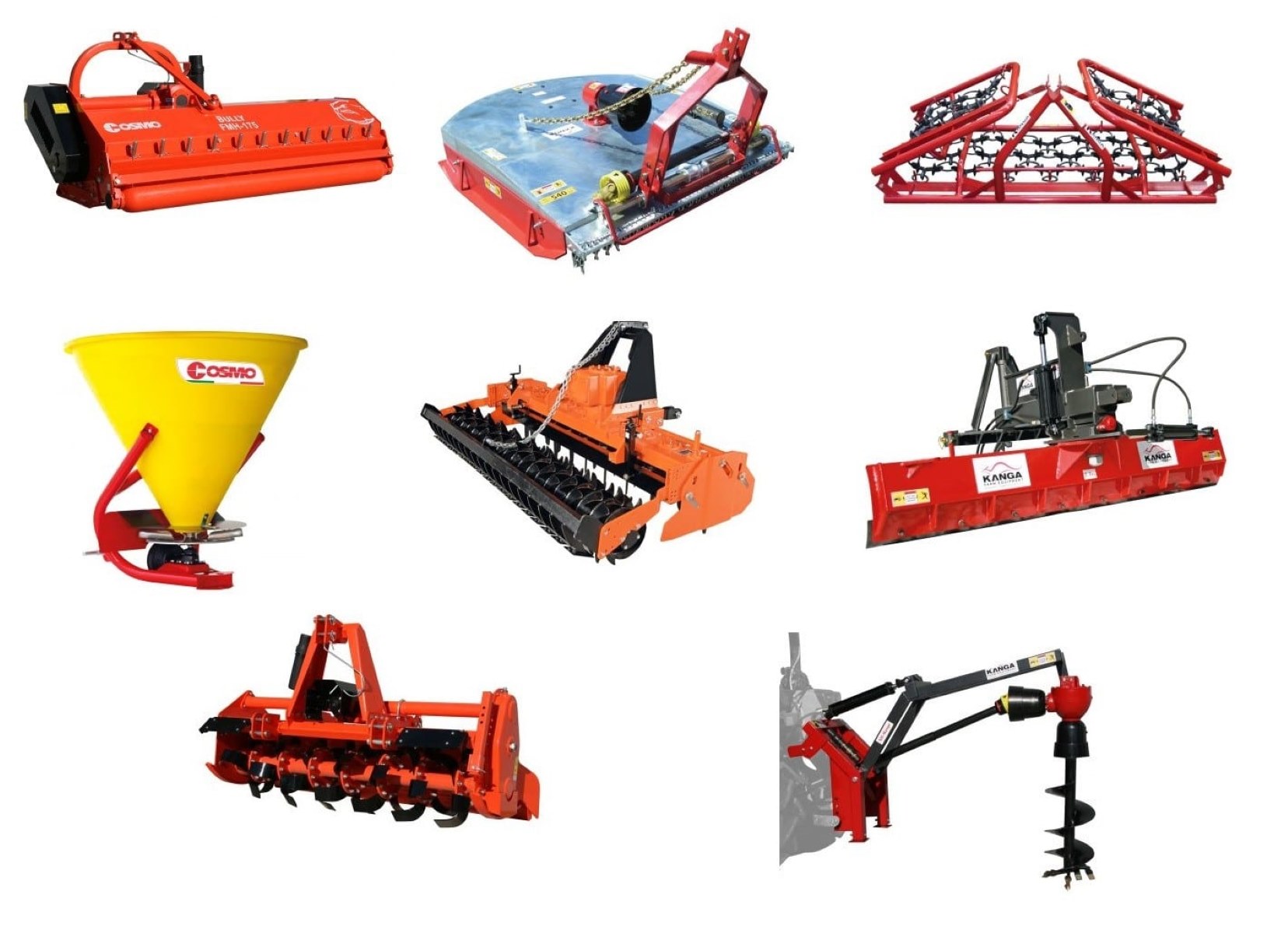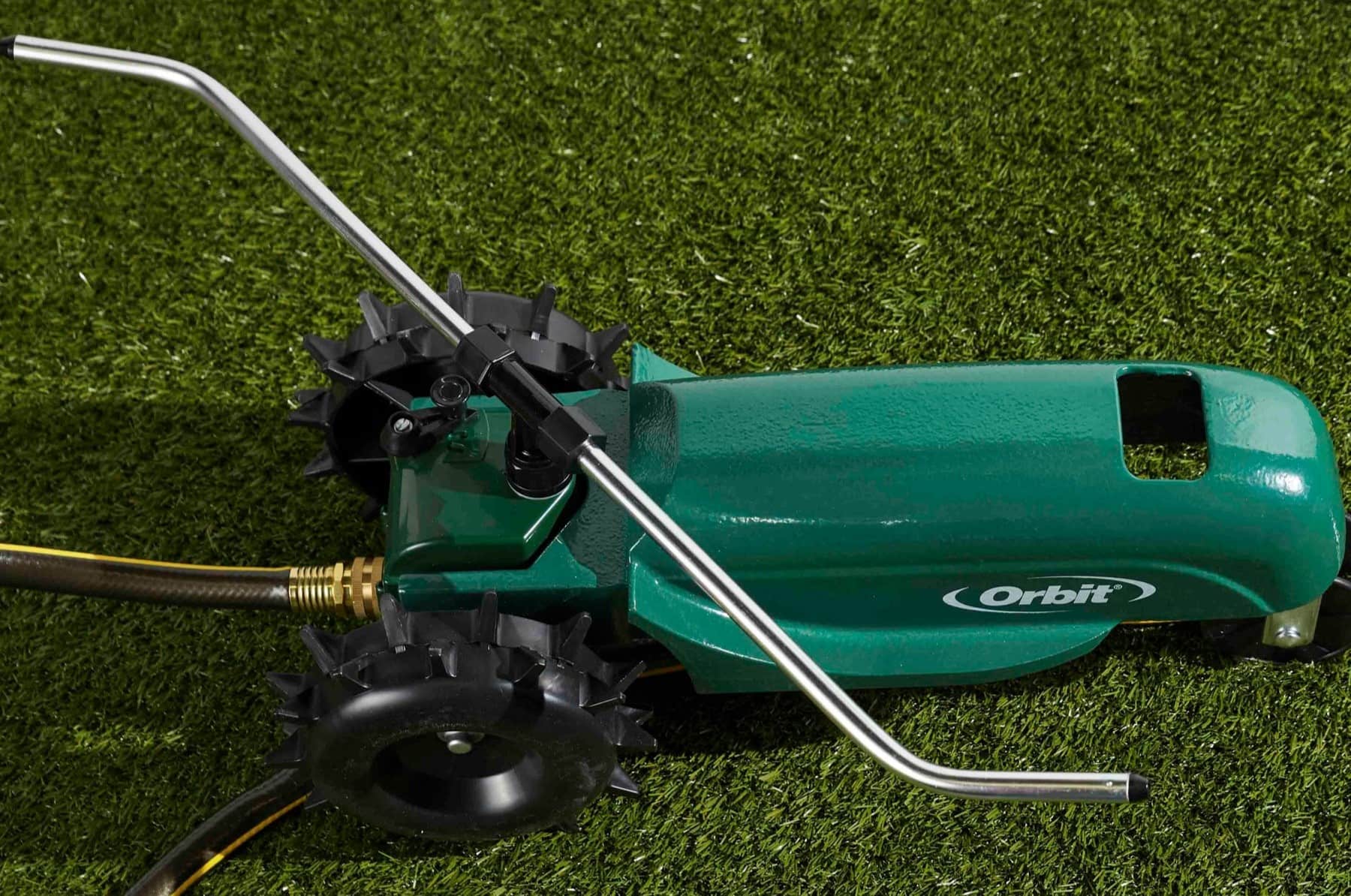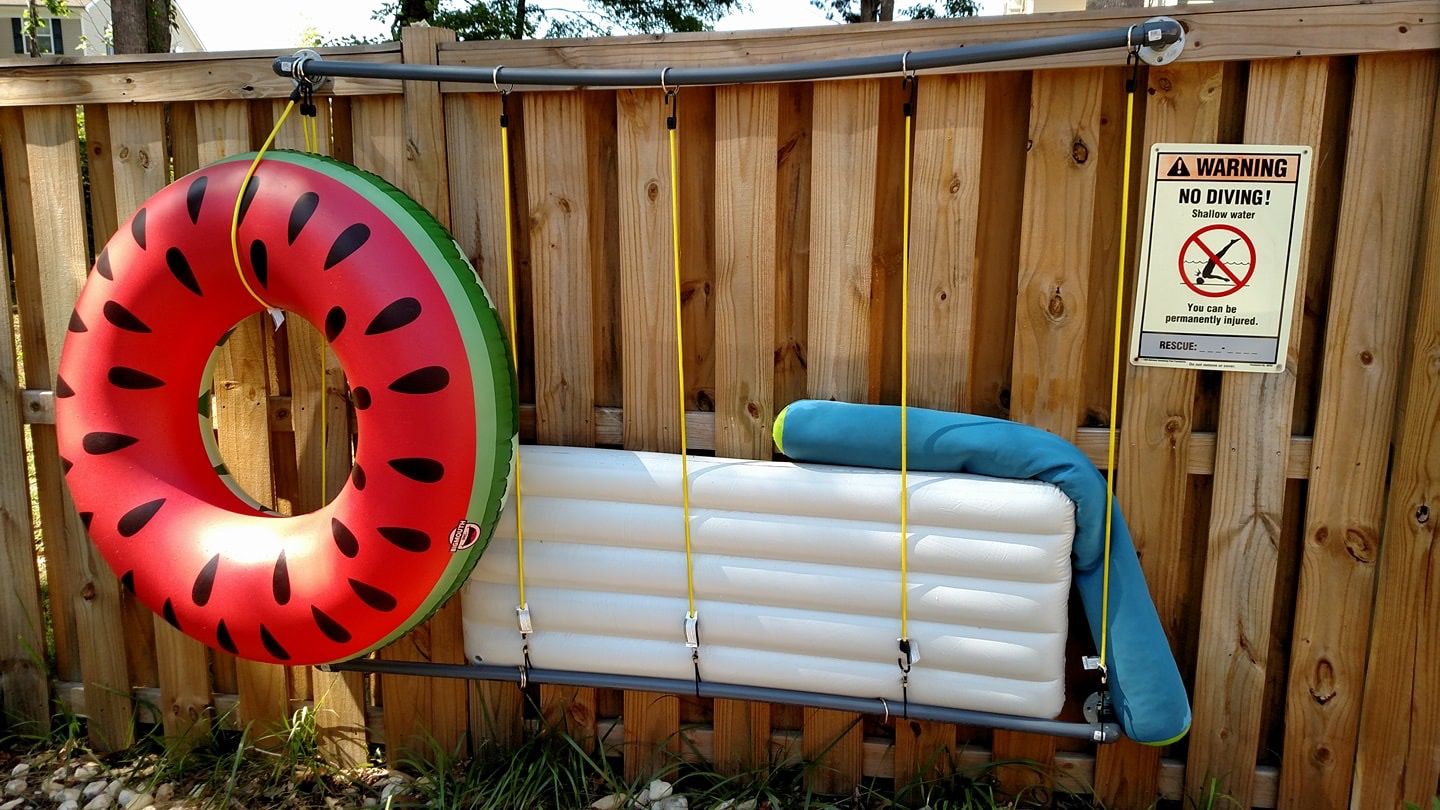

Articles
How To Store Tractor Implements
Modified: January 21, 2024
Discover the best ways to store tractor implements in this collection of informative articles. Keep your tools organized and protected for long-term use.
(Many of the links in this article redirect to a specific reviewed product. Your purchase of these products through affiliate links helps to generate commission for Storables.com, at no extra cost. Learn more)
Introduction
Tractor implements are essential tools for farmers and landowners, enabling them to perform a wide range of tasks efficiently. From mowing and tilling to plowing and planting, these implements play a vital role in agricultural operations. Proper storage of tractor implements is crucial to maintain their functionality, performance, and longevity. In this article, we will explore the importance of proper storage and provide valuable tips on how to store tractor implements effectively.
When tractor implements are not stored correctly, they can deteriorate, rust, and become less effective over time. Exposure to moisture, extreme temperatures, and other environmental factors can cause damage and reduce their lifespan. Additionally, improper storage can lead to difficulties in finding and accessing the implements when needed, which can hinder productivity and increase work time.
By following proper storage practices, you can ensure that your tractor implements remain in optimal condition, extend their lifespan, and have them ready for immediate use. Whether you have small attachments or large implements, implementing the right storage strategies will contribute to their longevity and ultimately save you time and money.
Key Takeaways:
- Proper storage, cleaning, and maintenance of tractor implements are crucial for longevity, performance, and cost-saving. Choose the right storage location, organize small attachments, and secure implements to protect against damage and ensure efficient farming operations.
- Maximizing storage space, protecting against weather conditions, and implementing regular inspection and maintenance checks are essential for preserving the functionality and longevity of tractor implements. By following effective storage practices, you can optimize the performance and lifespan of your farming equipment.
Read more: How To Implement A Lean Construction
Importance of Proper Storage
Proper storage of tractor implements is essential for several reasons. It helps prevent damage, ensures easy accessibility when needed, and prolongs the lifespan of the equipment. Here are a few key reasons why proper storage is crucial:
- Protection against damage: Tractor implements are often made of metal and are susceptible to rust and corrosion. By storing them in a dry and secure location, you can protect them from moisture, which can lead to rust and damage. Moreover, storing them properly prevents accidental damage caused by exposure to harsh weather conditions, falling objects, or accidental collisions.
- Enhanced functionality: Proper storage ensures that tractor implements are readily available and in good working condition when needed. By maintaining their functionality, you can maximize the efficiency and productivity of your farming operations. Implementing proper storage practices prevents the buildup of dirt, debris, and rust, which can compromise the performance of the equipment.
- Cost-saving: Agricultural machinery and implements are significant investments. By storing tractor implements correctly, you can extend their lifespan, reducing the need for frequent repairs or replacements. This saves you money in the long run and maximizes the return on your investment.
- Organization and efficiency: Proper storage enables you to keep your tractor implements organized and easily accessible. When stored in an organized manner, you can quickly find the specific implement you need, saving valuable time during busy farming seasons. This ensures a smooth workflow and enhances overall productivity.
In summary, proper storage of tractor implements is vital to protect them from damage, maintain their functionality, save costs, and enhance overall efficiency. By implementing effective storage practices, you can ensure that your implements are in good working condition and readily available for use, enabling you to optimize your farming operations and achieve successful outcomes.
Choosing the Right Storage Location
The choice of a suitable storage location for your tractor implements is crucial to ensure their safety and longevity. Here are some factors to consider when selecting the right storage location:
- Indoor or covered storage: Whenever possible, store your tractor implements indoors or in covered areas. This provides protection against direct exposure to weather conditions such as rain, snow, and sunlight. If indoor storage is not an option, consider investing in a sturdy and weatherproof shed or canopy to provide adequate coverage.
- Dry and well-ventilated space: Moisture is a common culprit of rust and deterioration. Choose a storage location that is dry and well-ventilated to minimize the buildup of moisture. Good ventilation helps to prevent condensation, which can lead to rust formation. If necessary, use dehumidifiers or moisture-absorbing products to maintain a dry environment.
- Away from direct sunlight: Prolonged exposure to direct sunlight can cause damage and fading to tractor implements. Whenever possible, select a storage location that offers shade or protects the implements from direct sunlight. If storing outdoors, consider using covers or tarps to provide shade and additional protection against UV rays.
- Avoid high traffic areas: Choose a storage location that is away from high traffic areas to minimize the risk of accidental damage. Ensure that the location is not obstructing any entrances or pathways, allowing easy access to other equipment and tools.
- Secure and locked: Security should be a top priority when choosing a storage location. Ensure that the storage area is secure and can be locked to prevent theft or unauthorized access. This is especially important if you store valuable tractor implements or if the storage area is accessible to others.
Consider these factors when selecting the right storage location for your tractor implements. By doing so, you can ensure their safety, protect them from damage, and extend their lifespan, ultimately maximizing their value and performance.
Cleaning and Maintenance of Tractor Implements
Proper cleaning and maintenance of tractor implements are essential for their longevity and performance. Regular cleaning and maintenance not only help prevent rust and damage but also ensure that the implements are always ready for use. Here are some important cleaning and maintenance tips:
- Remove dirt and debris: After each use, remove any dirt, mud, or debris from the tractor implements. Use a brush, water, and mild detergent if necessary. Pay close attention to hard-to-reach areas and crevices where dirt may accumulate.
- Inspect for damage: Regularly inspect the tractor implements for any signs of damage or wear. Look for cracks, bent parts, or loose connections. Address any issues promptly to prevent further damage or accidents during operation.
- Grease moving parts: Lubricate the moving parts of the tractor implements to reduce friction and prevent premature wear. Refer to the manufacturer’s guidelines for the recommended type and frequency of lubrication. Proper lubrication ensures smooth operation and extends the lifespan of the implements.
- Check and replace worn components: Over time, certain components of tractor implements may wear out and require replacement. Check the blades, belts, chains, and other crucial parts regularly. Replace any worn-out or damaged components to maintain optimal functionality and prevent further damage.
- Store implements in their proper positions: When not in use, store tractor implements in their designated positions. This helps maintain their shape, prevents unnecessary stress on parts, and ensures easy accessibility later on.
- Protect against rust: Apply a rust preventive coating or paint on exposed metal surfaces to protect them from moisture and rust formation. This is particularly important for implements that may be stored outdoors or in humid environments.
- Follow manufacturer guidelines: Always refer to the manufacturer’s guidelines for specific cleaning and maintenance instructions. Each implement may have unique requirements, and following these guidelines will help you ensure proper care and prevent any potential damage.
By following these cleaning and maintenance tips, you can keep your tractor implements in excellent condition and prolong their lifespan. Regular cleaning, inspection, lubrication, and addressing any issues promptly will contribute to their optimal performance and ensure that they are always ready to tackle your farming tasks effectively.
Organizing and Storing Small Tractor Attachments
When it comes to organizing and storing small tractor attachments, efficiency and accessibility are key. Proper organization ensures that you can quickly find and retrieve the attachments you need, saving you valuable time and effort. Here are some useful tips for organizing and storing small tractor attachments:
- Categorize attachments: Sort your small tractor attachments into categories based on their functionality or type. For example, you can separate attachments such as mowing blades, cultivator tines, or weeders into different categories. This categorization makes it easier to store and locate the attachments when needed.
- Use storage bins or racks: Invest in storage bins or racks specifically designed for small tractor attachments. These containers help keep the attachments organized and protected from dust, moisture, and other potential damage. Label each bin or rack with the corresponding category or attachment name for easy identification.
- Utilize wall storage: If space allows, consider using wall storage solutions. Install hooks or pegboards on the walls of your storage area to hang small tractor attachments. This method not only keeps them easily accessible but also saves valuable floor space.
- Store attachments vertically: Storing small tractor attachments vertically helps maximize storage space. You can use hooks or specially designed brackets to hang the attachments on a wall or inside a storage cabinet. Ensure that the attachments are securely fastened to avoid any accidents or damage.
- Keep manuals and accessories together: Store the user manuals, spare parts, and any accessories associated with the small tractor attachments in a designated area. Keep them together for easy access and to ensure that you have all the necessary components and information when using the attachments.
- Implement a labeling system: Labeling each storage bin, rack, or attachment helps you quickly identify and locate the specific attachment you need. Consider using color-coded labels or creating a numbering system to further streamline the storage and retrieval process.
- Maintain cleanliness: Periodically clean the small tractor attachments before storing them to prevent dirt, debris, or moisture buildup. Ensure that the attachments are dry and free from any residue before storing them in their designated places.
- Regularly reassess and declutter: Regularly assess your collection of small tractor attachments and declutter any attachments that are no longer needed or in poor condition. This helps prevent overcrowding and ensures that you are utilizing the storage space efficiently.
By implementing these organization and storage strategies, you can keep your small tractor attachments easily accessible, protected, and well-maintained. An organized storage system not only saves time but also helps prolong the lifespan of the attachments, making them more reliable and effective in your farming operations.
Read more: How To Implement Svelte Intrusion Detection
Storing Large Tractor Implements
Storing large tractor implements requires careful planning and consideration due to their size and weight. Proper storage not only ensures their protection but also allows for easy access and maintenance. Here are some essential tips for storing large tractor implements:
- Clear and spacious storage area: Select a storage area that is spacious enough to accommodate the size of the large tractor implements. Ensure that there is enough clearance for easy maneuvering and access. Remove any obstacles or clutter to create a clear and organized space.
- Sturdy and secure storage structure: Large tractor implements require a robust and secure storage structure. If possible, store them in a dedicated barn or farm building. Ensure that the structure is structurally sound, with strong walls and a stable roof to withstand the weight and prevent damage from adverse weather conditions.
- Proper positioning and alignment: Store large tractor implements in a position that maximizes storage space and minimizes stress on the equipment. Position implements vertically, whenever possible, to save space. Align the implements in a neat row, allowing for easy access and identification.
- Use equipment stands or supports: For implements such as plows, harrows, or planters that have ground-engaging components, use equipment stands or supports to keep them off the ground. This helps prevent damage to the components and ensures that the implements remain in good working condition.
- Implement weight distribution: Large tractor implements can be heavy and may cause damage if stored improperly. Make sure to distribute the weight evenly to avoid putting excessive stress on particular points of the implement. Use support beams or stands if necessary to distribute the weight and maintain stability.
- Secure implements in place: To prevent accidents or damage, secure large tractor implements in place. Use chains or straps to fasten the implements to the wall or floor of the storage structure. This helps prevent tipping or movement during storms or other unforeseen circumstances.
- Regular maintenance checks: Schedule regular maintenance checks for your large tractor implements even when they are not in use. Inspect for wear and tear, lubricate moving parts, and address any issues promptly. This ensures that the implements are always in good working condition and ready for use.
- Consider seasonal storage: In regions with extreme weather conditions, consider seasonal storage of large tractor implements. If certain implements are not needed during a specific season, store them separately to free up space for implements that are in use. Properly prepare and protect the stored implements from the effects of prolonged storage.
By following these guidelines, you can ensure the safe and effective storage of your large tractor implements. Proper storage not only protects the equipment from damage but also allows for easy access and maintenance, ultimately maximizing their lifespan and performance.
When storing tractor implements, make sure to clean them thoroughly to prevent rust and corrosion. Store them in a dry, well-ventilated area to avoid moisture buildup. Cover them with a tarp or protective covering to keep them safe from dust and debris.
Tips for Maximizing Storage Space
Efficient utilization of storage space is crucial for organizing tractor implements and optimizing workflow. With limited storage space available, it is essential to make the most of what you have. Here are some valuable tips for maximizing storage space:
- Utilize vertical space: Make use of the vertical space in your storage area by installing shelves, hooks, or hanging racks. This allows you to store implements off the ground, freeing up valuable floor space.
- Stack implements: Stack implements that are compatible and can be safely stacked without causing damage. Ensure that the lower implements are sturdy enough to support the weight of those above.
- Invest in storage systems: Consider investing in storage systems designed specifically for tractor implements. These may include tool chests, cabinets, or modular storage units that provide designated spaces for different implements and allow for easy organization.
- Use rolling carts or dollies: For heavier implements, invest in rolling carts or dollies to facilitate easy movement and storage. This allows you to easily transport and store implements without straining yourself or risking damage to the equipment.
- Implement a labeling system: Label each storage area or container with the name of the implement or category it holds. This makes it easy to identify and locate specific implements, saving time and effort.
- Arrange implements by frequency of use: Store frequently used implements in easily accessible areas, while placing less frequently used implements in less accessible areas. This maximizes efficiency and reduces time wasted searching for specific implements.
- Consolidate smaller implements: Consolidate smaller implements, such as hand tools or accessories, into a single container or toolbox. This saves space and ensures that all small items are kept together for easy access.
- Utilize wall space: Install pegboards, hooks, or wall-mounted brackets to hang tools, smaller implements, or accessories. This not only saves floor space but also keeps these items visible and within reach.
- Consider removable or adjustable storage solutions: Use removable or adjustable storage solutions to accommodate implements of different sizes. This allows for flexibility when storing implements with varying dimensions.
- Regularly declutter: Periodically reassess your inventory of implements and remove any that are no longer needed or in poor condition. Decluttering helps free up space for more essential items and prevents overcrowding.
By implementing these tips, you can effectively maximize the storage space available for your tractor implements. Optimizing storage space not only improves organization but also enhances efficiency and productivity in your farming operations.
Protection Against Weather Conditions
Protecting tractor implements from the elements is crucial to ensure their longevity and performance. Exposure to harsh weather conditions can lead to rust, deterioration, and damage, compromising the effectiveness of the equipment. Here are some important measures to protect your tractor implements against various weather conditions:
- Rain and moisture: Rainwater can cause rust and corrosion, especially on exposed metal surfaces. Store your implements in a dry location or cover them with waterproof tarps or covers. Use moisture-absorbing products or desiccants to reduce humidity levels and prevent moisture buildup.
- Sunlight and UV rays: Prolonged exposure to sunlight and UV rays can fade and damage the paint and other materials on tractor implements. Whenever possible, store implements in shaded areas or use UV-resistant covers or coatings to protect them from the sun’s harmful effects.
- Snow and ice: Snow and ice can cause significant damage to tractor implements. If you live in an area with frequent snowfall, ensure that your storage area has a sturdy roof to prevent accumulation of snow or ice. Clear away snow promptly to avoid excessive weight or damage from melting and refreezing cycles.
- Extreme cold: Extreme cold temperatures can affect the performance and integrity of tractor implements. If possible, store implements in insulated storage areas or use heating solutions, such as portable heaters or heated blankets, to prevent freezing and protect sensitive components.
- Extreme heat: High temperatures can cause damage to rubber components, plastics, and other vulnerable parts of the implements. Store implements in shaded areas or use reflective covers to minimize direct exposure to the sun. Allow for adequate airflow and ventilation to prevent excessive heat buildup.
- Wind and storms: Strong winds and storms can cause implements to topple over or become projectiles that can damage other equipment or structures. Secure implements with straps or chains to prevent them from being blown away. Strengthen your storage structure to withstand high winds and storms.
- Hail and debris: Hailstorms can cause significant damage to tractor implements. Whenever possible, store implements in enclosed structures or provide them with protective covers that can withstand impact. Avoid storing implements near trees or structures that can shed debris during storms.
- Scratching and abrasion: To prevent scratching and abrasion, avoid storing tractor implements in direct contact with each other. Place a thin barrier, such as foam padding or rubber mats, between implements to cushion them and minimize the risk of surface damage.
By taking these protective measures against various weather conditions, you can ensure the longevity and performance of your tractor implements. Proper storage and protection not only save you from costly repairs or replacements but also keep your implements in optimal working condition for years to come.
Securing Implements to Prevent Damage
Securing tractor implements properly is essential to prevent damage during storage and transportation. Implementing effective securing methods ensures that the implements remain stable, minimizing the risk of accidents, collisions, or shifting that can cause damage. Here are important steps to secure your implements:
- Use straps or chains: Secure large tractor implements with heavy-duty straps or chains to prevent movement and tipping. Choose high-quality straps or chains that can withstand the weight and stress of the implements.
- Connect to anchor points: Attach straps or chains to anchor points on the implements or the storage structure to ensure a strong connection. Distribute the securing points evenly to maintain stability and balance.
- Tighten and test: Ensure that the straps or chains are securely tightened to prevent any slack or movement. Test the security by gently applying pressure to the implement in different directions to verify that it remains stable.
- Use locking mechanisms: For implements with movable parts or components, secure them in place using locking mechanisms or brackets. This prevents accidental movement during storage or transportation, reducing the risk of damage.
- Protect vulnerable areas: Use protective padding or covers to shield vulnerable areas of the implement from scratches, dents, or abrasions. This is especially important for implements with delicate or easily damaged parts.
- Consider weight distribution: Pay attention to the balance and weight distribution of the implements. Ensure that heavier components or attachments are properly secured and positioned to prevent overload or tipping.
- Inspect and reinforce regularly: Regularly inspect the straps, chains, and other securing mechanisms for signs of wear or damage. Replace any worn-out or damaged parts promptly. Additionally, reinforce the securing points if needed to maintain their strength and integrity.
- Follow transportation guidelines: When transporting tractor implements, follow applicable transportation guidelines and regulations. Use appropriate trailers or vehicles designed for hauling heavy equipment. Secure the implements to the transportation device using approved methods to ensure safe transit.
- Consider professional assistance: If you are unsure or lack experience in securing large tractor implements, consider seeking professional assistance or guidance. Professionals can provide valuable advice and expertise to ensure that your implements are properly secured and protected.
By following these securing methods, you can minimize the risk of damage to your tractor implements during storage and transportation. Properly securing the implements not only protects them but also prevents accidents and extends their lifespan, ensuring that they continue to serve you effectively in your farming operations.
Read more: How To Replace Tractor Cab Glass
Regular Inspection and Maintenance Checks
Regular inspection and maintenance checks are essential for keeping tractor implements in optimal working condition. These checks help identify potential issues early on, prevent further damage, and ensure that the implements are safe and reliable. Here are important steps to follow for regular inspection and maintenance:
- Establish a schedule: Set a regular schedule for inspecting and maintaining your tractor implements. The frequency of checks may vary depending on factors such as frequency of use, operating conditions, and manufacturer recommendations.
- Inspect for visible damage: Begin the inspection by visually examining the implements for any visible damage, cracks, or signs of wear. Pay attention to critical areas such as cutting edges, hinges, hydraulic connections, and welded joints.
- Check for loose or missing parts: Ensure that all nuts, bolts, and fasteners are tightly secured. Tighten any loose components and replace any missing parts promptly. Loose or missing parts can lead to inefficiency, poor performance, or potential accidents.
- Examine lubrication points: Inspect the lubrication points of the implements and ensure they are properly lubricated. Refer to the manufacturer’s guidelines for the recommended type and frequency of lubrication.
- Test functionality: Test the functional aspects of the implements, such as blades, tines, or hydraulic systems. Verify that they operate smoothly and without any unusual noises or resistance. Address any issues promptly to prevent further damage or performance issues.
- Inspect hydraulic systems: If the implements have hydraulic systems, inspect hoses, fittings, and seals for any leaks or damage. Replace any worn-out or damaged components and address leaks promptly to prevent hydraulic failure.
- Check electrical systems (if applicable): If the implements have electrical systems, test the wiring, switches, and lighting. Verify that all electrical connections are secure and functioning properly. Repair or replace any faulty components as needed.
- Clean debris and residue: Remove any dirt, debris, or residue that may have accumulated on the implements. Use a brush, water, and mild detergent if necessary. Cleanliness not only improves the appearance but also prevents potential damage or mechanical issues.
- Refer to manufacturer guidelines: Always refer to the manufacturer’s guidelines and documentation for specific inspection and maintenance instructions. Follow their recommendations for proper care and maintenance to ensure the implements stay in optimal condition.
- Document maintenance activities: Keep a record of all inspection and maintenance activities performed on the implements. This includes dates, findings, and actions taken. This record serves as a reference for future maintenance and can help with warranty claims or resale value.
By regularly inspecting and maintaining your tractor implements, you can detect and address potential issues before they become major problems. This proactive approach not only prolongs the lifespan of the implements but also ensures safe and efficient operation in your farming or land maintenance activities.
Conclusion
In conclusion, proper storage of tractor implements is essential for maintaining their functionality, performance, and longevity. By implementing effective storage practices, you can protect your implements from damage caused by environmental factors, ensure easy accessibility when needed, and save costs by extending their lifespan. Here are some key takeaways to remember:
Firstly, choose the right storage location for your tractor implements. Opt for indoor or covered storage whenever possible, ensuring a dry and well-ventilated space away from direct sunlight. Secure the storage area and consider factors like space availability and security.
Secondly, proper cleaning and maintenance are important for the longevity of your tractor implements. Remove dirt and debris, regularly inspect for damage, lubricate moving parts, and replace worn-out components. Store implements in their proper positions and apply rust preventive coating when necessary.
Thirdly, organizing and storing small tractor attachments require categorization, the use of storage bins or racks, and utilizing wall storage. Label each storage area for easy identification and regularly declutter to optimize space usage.
When storing large tractor implements, select a clear and spacious storage area with a sturdy and secure structure. Ensure proper positioning and alignment, use equipment stands or supports, and distribute weight evenly to maintain stability.
Maximizing storage space can be achieved by utilizing vertical storage, stacking compatible implements, investing in storage systems, and using rolling carts or dollies for heavy implements.
For protection against weather conditions, ensure implements are protected from rain, sunlight, snow, extreme cold or heat, wind, hail, and debris. Use appropriate covers, shades, or coatings to minimize exposure and potential damage.
To prevent damage during storage and transportation, secure implements with straps or chains, connect to anchor points, and use locking mechanisms. Protect vulnerable areas with padding or covers and regularly inspect and maintain the securing mechanisms.
Regular inspection and maintenance checks are crucial for identifying issues early and ensuring safe and reliable operation. Establish a schedule, inspect for visible damage, check for loose parts, test functionality, and refer to manufacturer guidelines for specific maintenance instructions.
In summary, proper storage, cleaning, maintenance, and securing of tractor implements contribute to their longevity, performance, and safe usage. By following these guidelines and maintaining a proactive approach to storage and maintenance, you can ensure that your tractor implements remain in optimal condition, ready for efficient and productive use in your farming or land maintenance activities.
Frequently Asked Questions about How To Store Tractor Implements
Was this page helpful?
At Storables.com, we guarantee accurate and reliable information. Our content, validated by Expert Board Contributors, is crafted following stringent Editorial Policies. We're committed to providing you with well-researched, expert-backed insights for all your informational needs.














0 thoughts on “How To Store Tractor Implements”